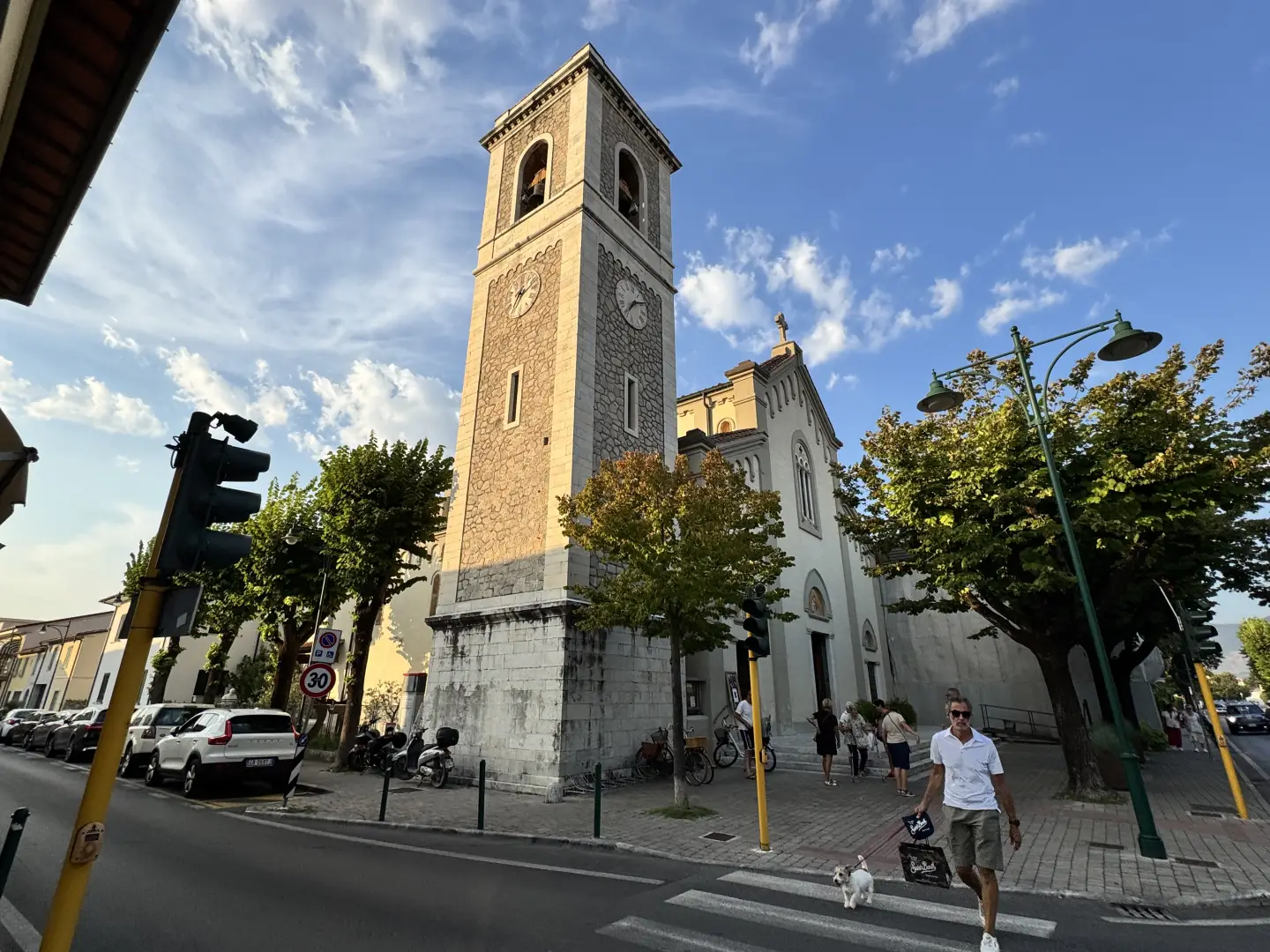Forte dei Marmi

Access
Access to the municipality is facilitated by its proximity to the motorway exit of the , which quickly connects to Pisa, La Spezia and Florence. The nearest railway station is in Querceta-Forte dei Marmi, a few kilometres from the centre, with direct connections to Pisa, Lucca and La Spezia. Pisa International Airport is about 35 km away, with road connections and private shuttles.
.Introduction
Forte dei Marmi is an elegant municipality on the Tuscan coast, in the province of Lucca, overlooking the Ligurian Sea and framed by the majestic outline of the Apuan Alps. Its flat land and wide sandy beaches have made it an elite seaside destination since the early 20th century, appreciated by the aristocracy and the international jet set. The name derives from the fort built in the 18th century by the Lorraines for coastal defence and from the historical activity of loading marble from the Apuan quarries. Today, Forte dei Marmi is a symbol of refined tourism, culture and high-level entertainment, combining sea, nature and high society in a unique context.
Description
The municipality covers a coastal plain of just under 9 km², with an average altitude of only 2 metres above sea level. The wide, golden beaches are lapped by generally calm waters and shallow waters, ideal for bathing. Behind, the strip of pine forests and gardens merges with the foothills of the Apuan Alps, offering striking landscape contrasts. The climate is mild all year round, with breezy summers and temperate winters, a condition that favours continuous tourism.
The origins of the village are linked to the 'Via di Marina', traced in the 15th century for the transport of marble extracted from the quarries of Seravezza and the surrounding area, chosen by masters such as Michelangelo. In 1788, the Lorraines built the Forte Lorenese, the symbolic nucleus around which the village developed, initially dedicated to marble-related port activities. Municipal autonomy from Pietrasanta was sanctioned in 1914, inaugurating a new phase of urban and tourist growth.
Today's economy revolves mainly around seaside and luxury tourism. Historical bathing establishments, haute couture boutiques, fine dining and hospitality in exclusive villas and hotels constitute the heart of local activities, while handicrafts - particularly those related to furniture and marble working - maintain a significant presence.
Cultural traditions are intertwined with important events such as the International Political Satire Award, active since 1973, hosted in spaces such as Villa Bertelli or La Capannina di Franceschi, a famous nightclub in operation since 1929 and considered the oldest restaurant-disco in the world. The patron saint's festival of San Ermete, on 28 August, enlivens the centre with religious celebrations, markets and fireworks displays. The local cuisine emphasises ingredients from sea and land, with dishes such as cacciucco (fish stew), fresh grilled fish and fresh pasta specialities, often enriched with typical Tuscan products.
On the excursion front, in addition to cycling along the coastline and through the pine forests, Forte dei Marmi offers easy access to nature trails in the Apuan Alps, ranging from via ferrata to scenic paths, and cultural itineraries to Pietrasanta and Carrara. In summer, boat trips allow you to discover the coast and the nearby Cinque Terre.
Information
Area: 8.88 km²
Altitude: 2 m
Maximum elevation: approx. 10 m (backshore and dunes)
Number of inhabitants: 6 618 as of 31.12.2024
Name in dialect: -
Inhabitants' name: Fortemarmini
Patron Saint: San Ermete martire (28 August)
Bordering municipalities: Montignoso (MS), Pietrasanta, Seravezza
Internet site: www.comune.fortedeimarmi.lu.it